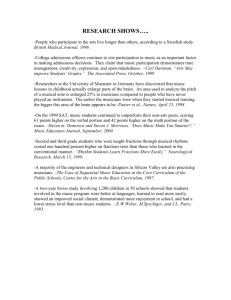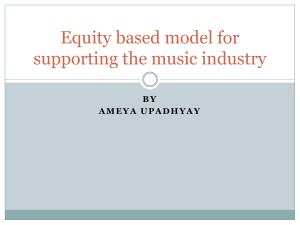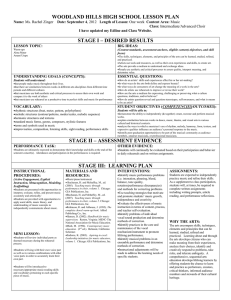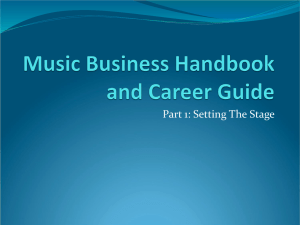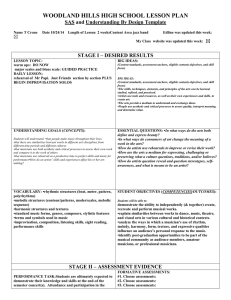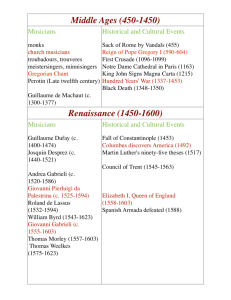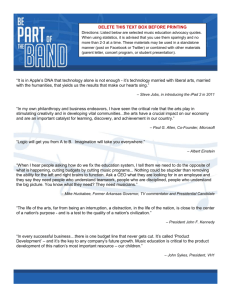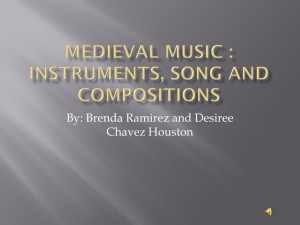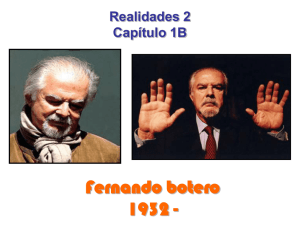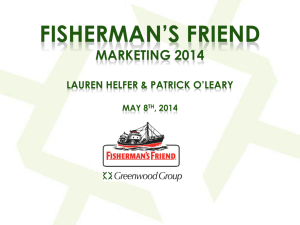Music business models
advertisement
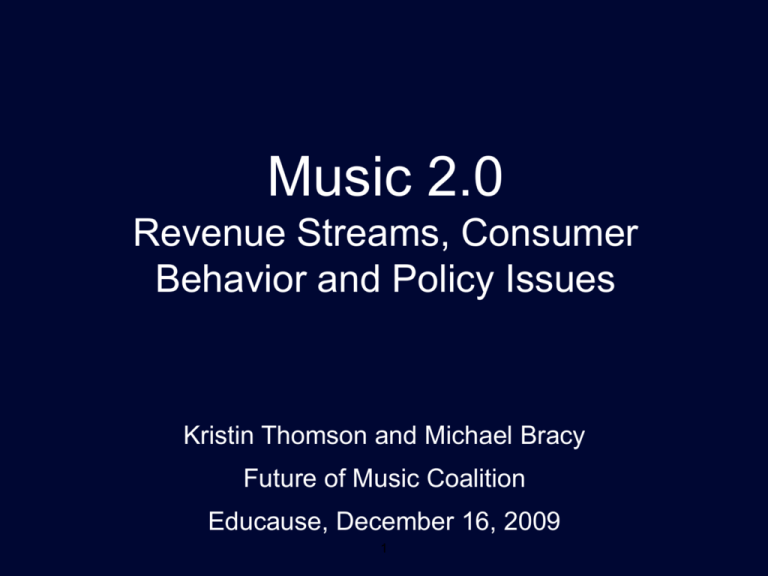
Music 2.0 Revenue Streams, Consumer Behavior and Policy Issues Kristin Thomson and Michael Bracy Future of Music Coalition Educause, December 16, 2009 1 Giving Musicians a Voice • Founded in 2000 by musicians, artist advocates, technologists and legal experts • Work is rooted in the real-world experiences of musicians • Musicians and creators as stakeholders in policymaking process 2 FMC Core Philosophies • Policy decisions made in Washington have a much greater impact on the music community than many people realize • Artists need to be seen as stakeholders • The only antidote to an illegal Napster is a legal Napster • Innovation + Access => growth of a legitimate digital music marketplace 3 FMC Policy Objectives • • Access to technology and deployment • competitive broadband marketplace • broadband affordable and accessible Innovation is key • support development of new applications and models that compensate creators • support network neutrality • FMC’s Rock the Net Campaign started 2005 4 Musicians and the old model for “success” • Access to financing to record and manufacture • Access to promotion • Commercial radio • Music industry and mass media magazines • MTV • Access to distribution • retail stores 5 Major label contract …but artists had to sign away their copyrights in perpetuity 6 Music industry’s traditional model • Exclusive right to manufacture and distribute sound recordings • Revenue from CD sales • Revenue from licensing deals • Invested in promotion to sell more records • Videos • Tour support • Radio payola 7 All efforts funneling consumers to controllable points of purchase 8 • • • Technology benefits musicians Digital studios affordable recording More promotional channels, many free • Internet and satellite radio • Social networking: MySpace, Reverbnation, Facebook, last.fm, Twitter • Blogs • YouTube More universal access to distribution • lower barriers to entry for digital distribution 9 channels New landscape for consumers...and labels • Sudden abundance • limitless shelf space • 24/7 worldwide access to music • even “out of print” albums were available • in early days of digital music, it was free • Labels unable to control manufacture and distribution 10 New ways to access music • Digital Stores • Physical media through mail • Digital files • On Demand Playback • Subscription services • Ad supported • Webcasting, Satellite and Internet Radio 11 Extra credit reading Music Business Models futureofmusic.org/article/article/new-business-models Spreadsheet of how labels, performers and songwriters are paid via various music services: futureofmusic.org/files/newbusinessmodels.pdf Illustration of how independent or unsigned musicians can use companies like CD Baby, ReverbNation and Tunecore to get their music into various music stores: 12 www.futureofmusic.org/files/digitaldistribution.pdf Digital stores 13 14 15 16 17 Subscription services 18 19 20 21 Webcasting + Radio 24 25 26 27 28 29 What will Music 3.0 look like? 30 What will Music 3.0 look like? • • Music consumers will continue to want • access to robust, complete catalogs of music • to play “their” music on many devices, including cellphones, in their dorm rooms, in their cars • to build playlists, share them with friends • to follow their favorite artists and bands via social networking tools/Twitter Musicians and rightsholders want • fair compensation, equal31 access to new technologies Can we strike a balance between artist compensation and consumer expectations? 32 Music 3.0 and Policy • Net neutrality • Access to affordable, reliable broadband • Proper metadata • Future work • Research on artists’ revenue streams 33 www.futureofmusic.org 34
